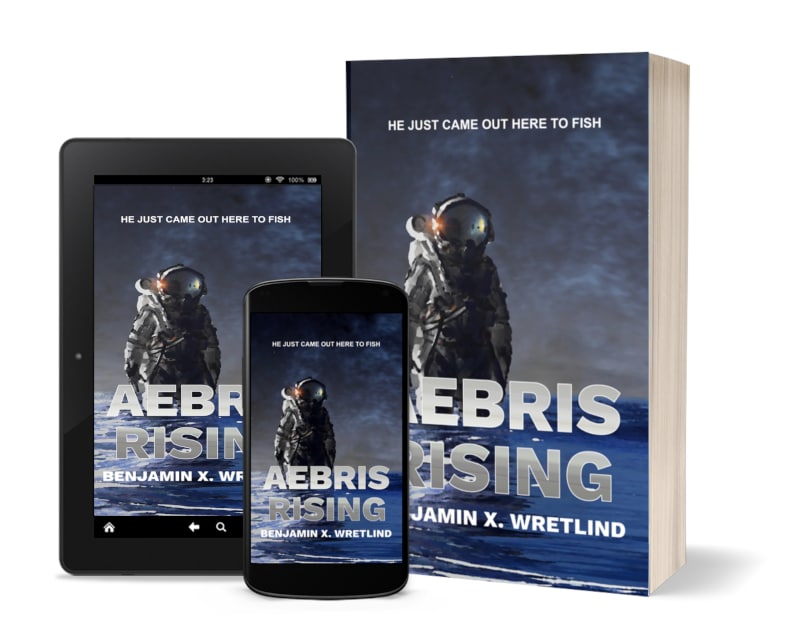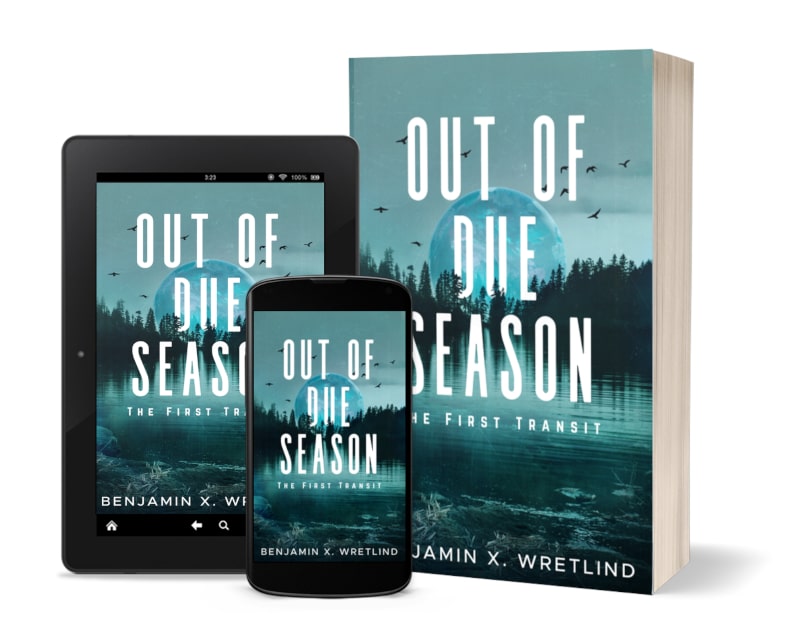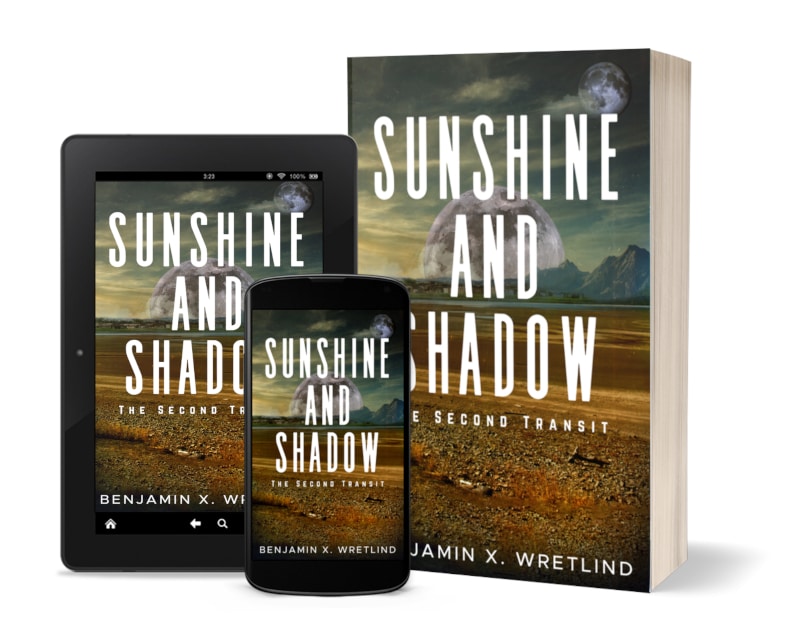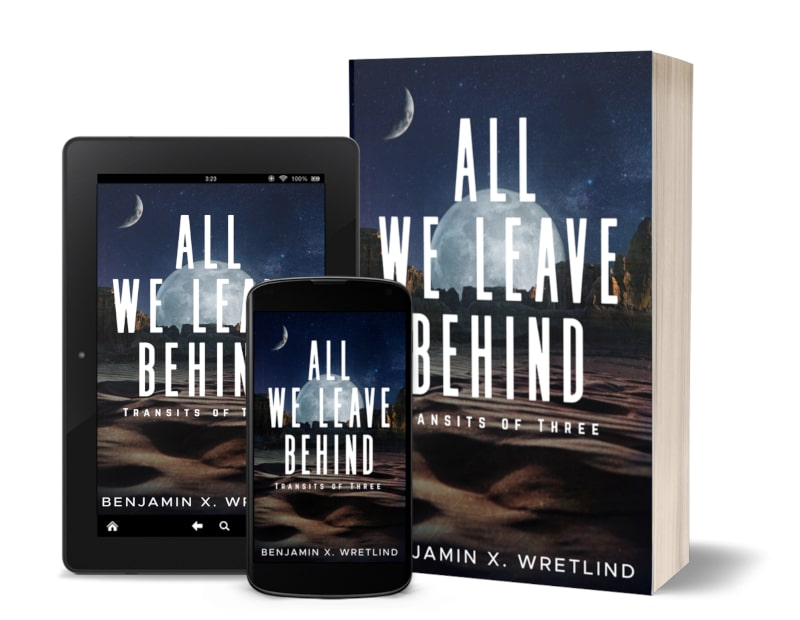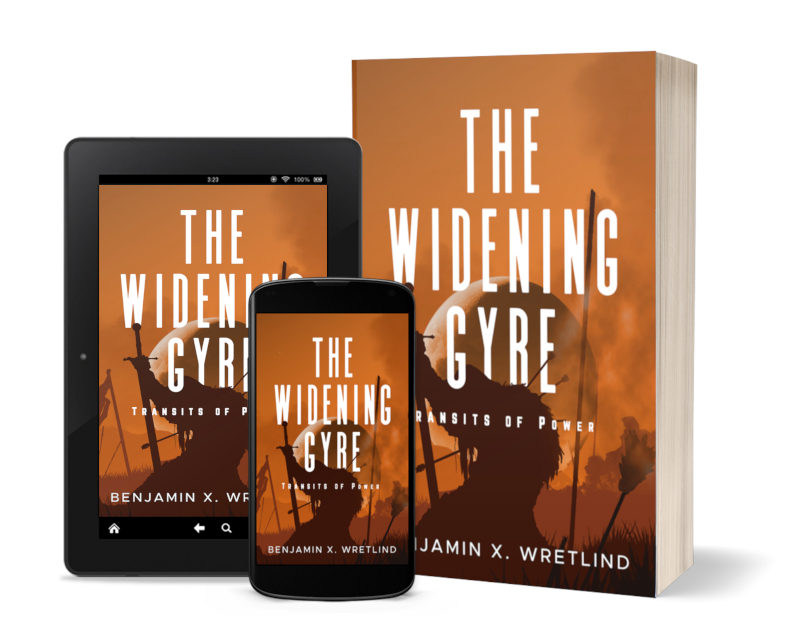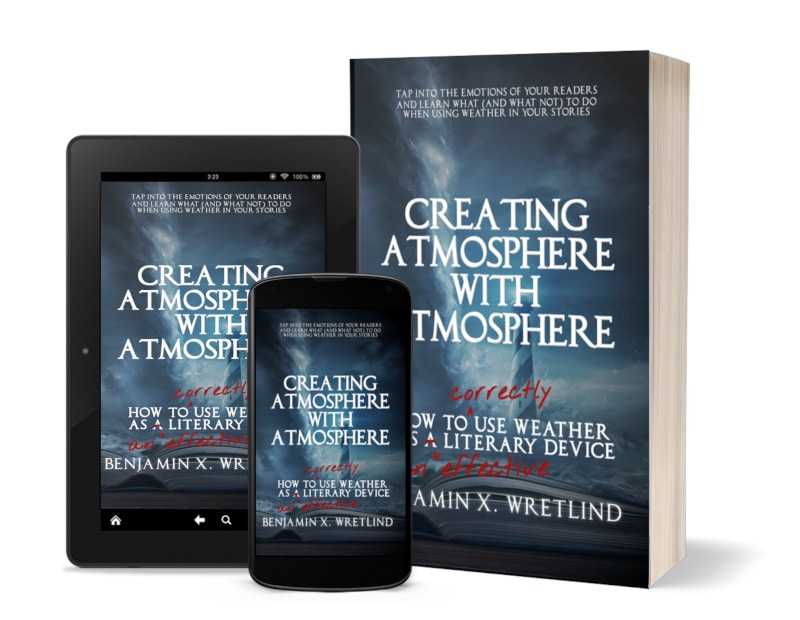The following excerpt is from Aebris Rising, which will be released on May 23, 2023.
2
The Magnum Asinum Mare is basically the only geographic feature on the planet Minor Pales (as in “pal-ess”) which rests firmly within the habitable zone of the star Gliese 1061. Its cousin planet, Maior Pales, has about the same orbit, and enjoys much better advertising. It is also much livelier. It has landmasses, lakes, mountains, canyons and nowhere near the amount of water that covers Minor Pales. It is home to nine hundred unique settlements. There is Free Point, Roman, Cherryfield, Villa de Pales, Sagittaria and more. Originally built by the AIWU Local 26—robots with a union—the settlements were planned as destinations for the rich who could afford to leave Earth two hundred years ago in the burgeoning first days of interstellar travel. The AI robots are still around, but their union bylaws keep them on a near permanent break from labor. Now those settlements are vibrant communities for, well, still the rich.
That’s where Minor Pales comes into play. To better facilitate effective interstellar travel, hydrogen positride is required. While it is possible to make this exotic compound on Earth in minute and unstable amounts, it’s much easier to mine for what’s needed and process it elsewhere where labor is cheap and accidents can be covered up. That place is Minor Pales. Do not ask me to explain any more than this. I’m a cook, not a physicist.
I will say that the Foreaas Corporation, who owns and operates the nine prison mining rigs and one administrative platform on this watery ball of doom, is said to have made trillions already. That’s with a T, not a B, not an M. And to ensure they continue to make trillions, all rigs—to include the Amesware Abyss where I lived—are run and operated by criminals with small paychecks and life sentences in a medium-security setting. You don’t leave this place once you arrive, even in a body bag.
Yes, that includes me.
Even though there is freedom to move around the rig, truth be told, the Amesware Abyss is a maximum security facility. Escape is impossible, considering there’s no place to go. If you do swipe a pleasure craft, you’re going to run out of fuel quickly and die adrift on the ocean. If by some miracle you actually had enough fuel to reach another platform, well, that’s a prison, too.
I often wonder what the real maximum security prisons are like. I suppose I am lucky in that regard.
So, there I was, falling toward the Magnus Asinum Mare in a pleasure craft I’d leased for the week to go fishing. The sea was kind enough to greet me with a salty, icy, smelly swell. If I weren’t strapped into the pilot’s seat, I would have hit the ceiling with a crunch and been unable to proceed with my planned vacation activities. I’ve always been thankful for the swells, because dropping four hundred meters from the underbelly of a rig into a trough is like hitting concrete. Dropping into a swell is more like hitting dirt. Gratefully, the Amesware Pleasure Seven was built for this kind of abuse.
I was not, nor have I ever been. I’ve broken bones, had my liver replaced, and have two appendages I was not born with. Mind you, none of this was recent. You lose an arm on the Amesware Abyss, and you might as well learn to do things with your other arm because you won’t be whole again. My left arm and right leg are both silicon and titanium and easily replaceable. They are ugly, too, but functional. Despite other deformities—a scar running down the left side of my face from my forehead to my chin, a cloudy right eye from a botched retina transplant, and an extraneous nipple—I’m not an unhealthy person even if I look like it. I couldn’t imagine being frail and dropping into the sea like this. How many people have actually died that way?
The ship settled onto the surface of the sea after a good hundred meter dive. Most of the Amesware Pleasure Seven, like all pleasure craft, was surrounded by a titanium and carbon-fiber shell, with only a few places to step out and enjoy the weather. Not that you could enjoy the weather on Minor Pales. There were a few days a year when the wind blew at over two hundred knots, the sky was covered with a thick blanket of dark, undulating green clouds, and the waves were around fifty meters. Most days, however, the atmosphere was relatively nice—two degrees centigrade, wind calmer at only fifty knots, horizontal acidic rain, and sea swells at five to seven meters. You could go out on the bow of your pleasure craft provided you were fully encased in an outersuit and tied to one of the support beams.
I’d had my outersuit recently serviced and cleaned. It’s no fun to step into one that smells like someone took a shit or vomited and left it for the life support guys to ignore. I did that once and I still feel the pangs of regret. My suit was stowed away near the bow hatch and would be ready when I was finally at my destination. Once there, I would put it on, grab my gear, and tie myself to the bow.
This assumed the weather held. Forecasting on Minor Pales is like a shih tzu reading chicken bones. I read once that the atmosphere is so unpredictable, it makes little sense to guess what was going to happen more than twenty-four hours out—not like on Earth, where AI can model conditions out to four weeks with a surprising amount of accuracy. No, on Minor Pales, you’d be lucky to be half right about what was going to happen in an hour. The sole meteorologist on board the Abyss, Craig something or other (I never caught his last name), was a moron.
Honestly, it made fishing fun even if getting there was a vomitous ride through a watery hell. I remember the first time I came out to fish after three years on board the Amesware Abyss. I threw up four times in the first kilometer. After that, my stomach was empty.
I had eaten a synthetic banana before I left this time, however. The rig doc promised me it would taste the same going down as it does coming up.
Read more Short Stories, Excerpts and Poems
All text copyright 2023, Benjamin X. Wretlind


